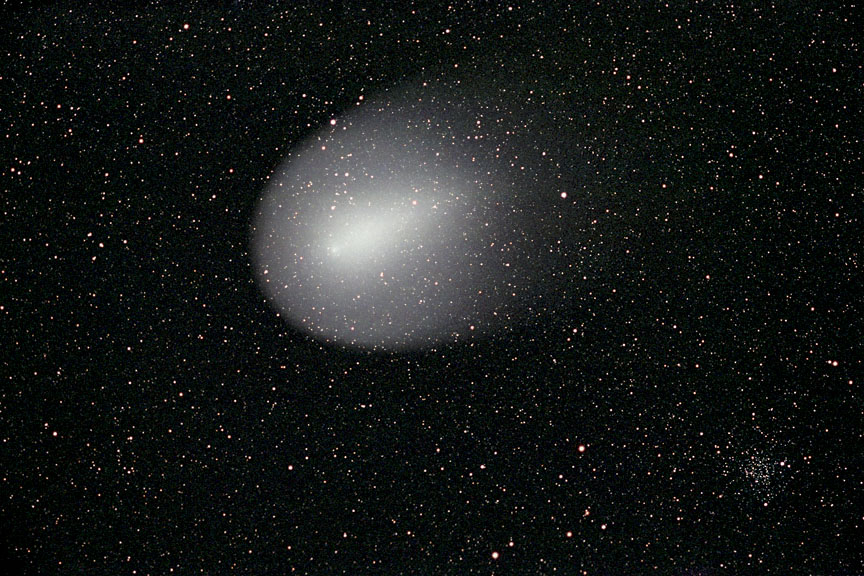

| 
|

Comet Holmes is a periodic comet that orbits the Sun between Mars and Jupiter once every 6.9 years. It normally is so dim that it can't be seen in backyard telescopes, but between October 23-24, 2007, it unexpectedly ejected a huge shell of dust and gases and brightened nearly a million times, becoming visible to the unaided eye. The outburst was probably caused by a build-up of internal gases that broke through to the surface, blowing dust out into space. The ejected shell expanded rapidly and by November 9, 2007 was larger than the Sun.
By December 7, 2007, when this image was made, the comet was still visible without optical aid in the constellation Perseus and the shell appeared larger on the sky than the full Moon. The comet's orbit was taking it across the sky and away from the Earth with the Earth positioned roughly between the comet and the Sun. Because comet tails point away from the Sun, our vantage point on Earth showed us the head of the comet with its tail pointing away from us.
In the lower-right corner of the image, open star cluster NGC 1245 is also visible.
Astro-Physics 105mm refractor at f6. A composite of four 10-minute exposures on Kodak Supra 400 color negative film between 3:00 and 4:00 UT on 2007-12-07 from northern New Jersey. The field of view is 2° by 3° with north to the lower left. ©2007
| |||||||||||||||||
|
Astrophotography Books – Astronomy Books |








